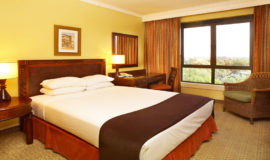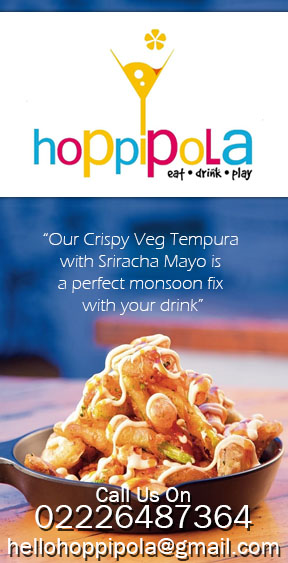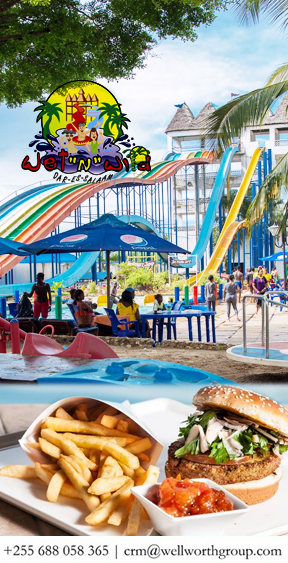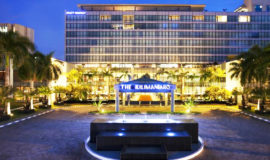

General Information About
Dar es Salaam
Dar es Salaam (from Arabic: دار السلام Dār as-Salām, literally "the abode of peace" or simply Dar, formerly Mzizima) is the largest city of Tanzania and the largest city in eastern Africa by population, as well as a regionally important economic centre.It is Tanzania's most prominent city in arts, fashion, media, music, film and television. It is Tanzania's leading financial centre with the Dar es Salaam Stock Exchange (DSE) being the country's first and most important stock exchange market. Dar es Salaam is the largest and most populous Swahili speaking city in the world.
It is the capital of the Dar es Salaam Region administrative province and consists of five boroughs or administrative districts: northern Kinondoni, central Ilala, Ubungo, southern Temeke, and Kigamboni.
The city is the leading arrival and departure point for most tourists who visit tourism areas in Tanzania like the national parks for safaris and the islands of Zanzibar.
The region had a population of 4,364,541 as of the official 2012 census. Although Dar es Salaam lost its status as the nation's capital to Dodoma in 1974 (not completed until 1996), it remains the focus of the permanent central government bureaucracy.

Sports Played in
Dar es Salaam
The National Stadium hosts Dar es Salaam's Young Africans Football Club, Simba Sports Club, Azam F.C. and other Tanzanian football clubs, and international matches. There is a proposal to build a new stadium in Dodoma, much bigger in capacity than the present one in Dar es salaam by the government as a donation from the Moroccan Kingdom. Dar es Salaam's Mama Africa school, founded in 2003, is known for training some of Africa's finest acrobatsSports in
Dar es Salaam
Stadium
Dar es Salaam is the sports center of Tanzania. Dar es Salaam hosts the second largest stadium in East and Central Africa (National Stadium), which can accommodate up to 60,000 people.Swimming
Dar es Salaam hosts numerous outdoor swimming clubs and also swimming opportunities offered to people for leisure on the sandy beaches of the Indian Ocean being a coastal city.Table Tennis
Dar es Salaam's Union Sports Club hosts a single room table tennis. The club has a yearly table tennis tournament during the Muslim month of Ramadhan.Golf
The Gymkhana Golf Courses located north west of the Kivukoni area (between the city centre looking on to the shores of the Indian Ocean in the east and Barack Obama Drive), also has tennis courts, squash courts, and a fitness club. Outside of the metropolitan districts, there is the Lugalo Military Golf Course (located in the Lugalo Military Barracks).Car Racing
The Rally of Tanzania is an international rally racing event organised by the Automobile Association of Tanzania. The rally is based in the port city of Dar es Salaam and travels south-west to Pugu hills for its competition stages. The event is a round of the African Rally Championship and the Tanzanian National Rally Championship.The event was first run in 2001 as a largely amateur event and was not held again until 2004 when a considerably more ambitions event was held. The rally became part of the African championship in 2005, becoming the opening round of the season. 2013 saw a calendar reshuffle to mid-season as well as a location shift from Bagamoyo to the Pugu Hills.
Zimbabwean driver James Whyte is the only driver to have scored more than one victory after winning back-to-back in 2009 and 2010.

Dar es Salaam
Culture and History
Dar es Salaam has heavy traffic during the daytime, but after sunset the area is relatively quiet as much of the city's nightlife is located in more residential districts away from the city's mainly commercial centre.The sprawling suburbs furthest from the city centre are generally populated by Tanzanians of African descent, with the exception of Oyster Bay, where there is a large population of foreign expatriates.
The edges of Dar es Salaam are spreading rapidly, severely taxing the transportation network (which aside from ferries, lacks any kind of mass transit facilities) and raising the prospect of future urban overcrowding.

Dar Es Salaam Nightlife
The music scene in Dar es Salaam is divided between several styles. The longest standing style is live dance music (muziki wa dansi) bands such as DDC Mlimani Park Orchestra and Malaika Musical Band as examples. Taarab which was traditionally strong in Zanzibar has also found a niche. However, it remains small compared both to dance music and "Bongo Flava", a broad category that represents the Tanzanian take on Hip Hop and R&B, which has quickly become the most popular locally produced music.Traditional music, which locally is used to refer to tribal music is still performed but typically only on family oriented occasions such as weddings. Recently there has been development of another music niche, a taste that is rising and to be prominent as BongoFlava known as Singeli with star singers such as Msaga Sumu and Man Fongo.
In the 1970s, the Ministry of National Youth Culture aimed to create a national culture, which stressed the importance of music. Dar es Salaam became the music center in Tanzania, with the local radio exposing new bands and dominating the music and cultural scene. With this ujamaa, or family, mentality governing culture and music a unified people’s culture was created, leading to the rise of hip hop music. Throughout the years, the radio in Dar es Salaam has played a major role in the dissemination of music because many people don’t have television and cassettes are used over CDs.
Popular Bars in Dar Es Salaam
Maisha basement
New city RD, Dar es salaam - TanzaniaBilicanas
Mkwepu ST, Dar es salaam - TanzaniaJozi lounge
School RD, Dar es salaam - TanzaniaNew Maisha club
Dar es salaam - TanzaniaClub Juleva
Bunju A ''Shule ( Along Bagamoyo RD)'' Dar es salaam - TanzaniaClub 327
Dar es salaam - TanzaniaLegends bar & club
LTD - Aly Bin Said - Karume RD, opp Wonder workshop, Namanga - Dar es salaamMkhot Night club
Mak resrt inn (makhot) is located in the middle of mbezi beach few meters off old bagamoyo RD, Dar es salaam - Tanzania
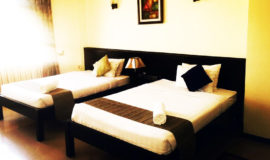
Hotel SapphireDar Es Salaam Tanzania
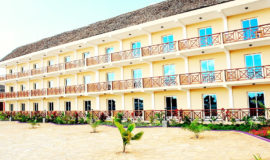
Hotel South Beach ResortDar Es Salaam Tanzania
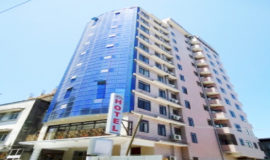
Rainbow HotelDar Es Salaam Tanzania
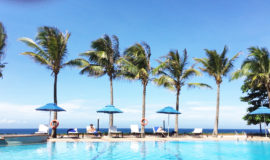
Sea Cliff HotelDar Es Salaam Tanzania
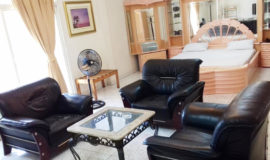
Sophia House Hotel & ApartmentsArusha Tanzania
